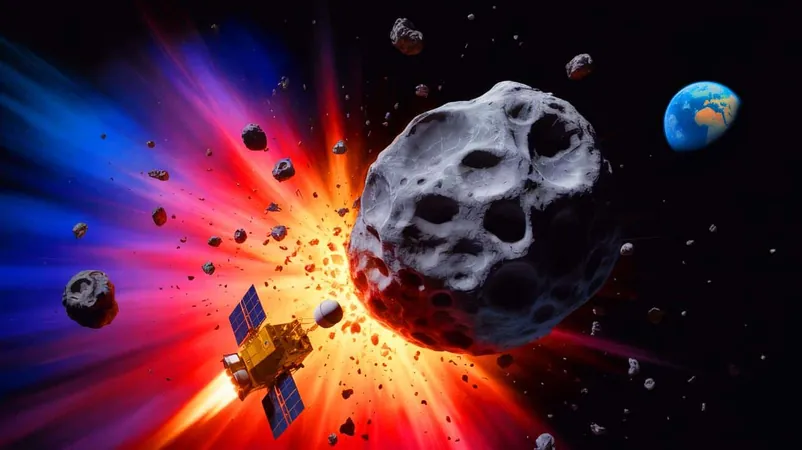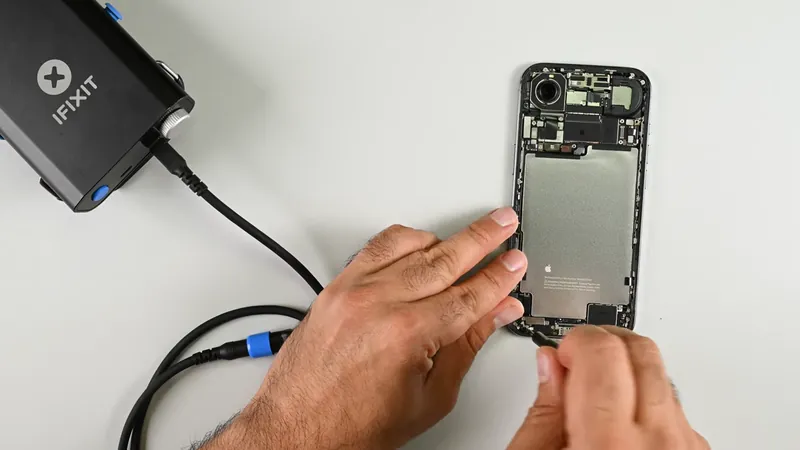
NASA’s Asteroid Smashing Mission: Did We Just Alter Dimorphos’ Path?
2025-09-21
Author: Chun
A Historic Moment in Planetary Defense
In a groundbreaking experiment that could reshape our understanding of planetary defense, NASA's DART (Double Asteroid Redirection Test) spacecraft recently collided with the asteroid moon Dimorphos, over 5 million miles away. Initiated by a faint radio signal from a control center in Turin, Italy, this mission has provided vital insights into how we can protect Earth from potential asteroid threats.
The Collision: A Massive Ejection of Material
When DART impacted Dimorphos, it unleashed an incredible 35.3 million pounds of rock and dust into space—roughly the weight of 100 fully-loaded jumbo jets! This debris created a stunning tail visible for up to 12 days following the impact, reminiscent of a comet’s tail. While this ejected material constituted less than half a percent of Dimorphos' mass, it had a powerful effect: it significantly altered the asteroid's orbit around its larger sibling, Didymos, by 33 minutes—a change easily tracked from Earth.
How LICIACube Captured the Moment
The accompanying satellite, LICIACube, raced through space at 15,000 miles per hour, capturing images every three seconds during this historic event. Positioned just 53 miles from the point of impact, it provided a detailed look at the collision dynamics. The satellite’s LUKE camera used multiple wavelengths to document the incident, revealing crucial data about the debris plume's composition.
Revealing Insights from the Ejecta
What’s fascinating is that the plume's brightness varied over time, initially shining brightly in sunlight before transitioning to a softer glow—indicating larger particles were present. Surprisingly, nearly 45% of the material in the plume was hidden, showcasing the complexity of asteroid impacts.
Unpacking Dimorphos’ Structure
Researchers discovered that Dimorphos is a 'rubble pile' composed of loosely bound rocks and dust. This fragility makes it easier to dislodge materials during impacts. Future deflection strategies must consider this structure, as it significantly affects the efficiency of altering an asteroid's trajectory. Insights gleaned from the DART mission are crucial for developing effective planetary defense systems.
A New Era for Planetary Defense
With numerous asteroids frequently passing near Earth, the DART mission stands as a testament to our capabilities in planetary defense. It has demonstrated that kinetic impactors can not only strike but also use debris ejected from impacts to enhance deflection, creating a double-layered defense mechanism. As we turn our sights to future missions, it’s imperative to remember that different asteroid compositions yield varying responses to impacts, emphasizing the need for ongoing research.
The Road Ahead
The completion of the DART mission marks a significant leap forward in safeguarding our planet. With LICIACube’s extraordinary images in hand, we now possess unprecedented insights into asteroid collisions and potential avenues for Earth’s protection. As we stay vigilant against cosmic threats, the pressing question becomes: How can we continually refine our techniques and technologies to ensure the safety of our home planet?



 Brasil (PT)
Brasil (PT)
 Canada (EN)
Canada (EN)
 Chile (ES)
Chile (ES)
 Česko (CS)
Česko (CS)
 대한민국 (KO)
대한민국 (KO)
 España (ES)
España (ES)
 France (FR)
France (FR)
 Hong Kong (EN)
Hong Kong (EN)
 Italia (IT)
Italia (IT)
 日本 (JA)
日本 (JA)
 Magyarország (HU)
Magyarország (HU)
 Norge (NO)
Norge (NO)
 Polska (PL)
Polska (PL)
 Schweiz (DE)
Schweiz (DE)
 Singapore (EN)
Singapore (EN)
 Sverige (SV)
Sverige (SV)
 Suomi (FI)
Suomi (FI)
 Türkiye (TR)
Türkiye (TR)
 الإمارات العربية المتحدة (AR)
الإمارات العربية المتحدة (AR)